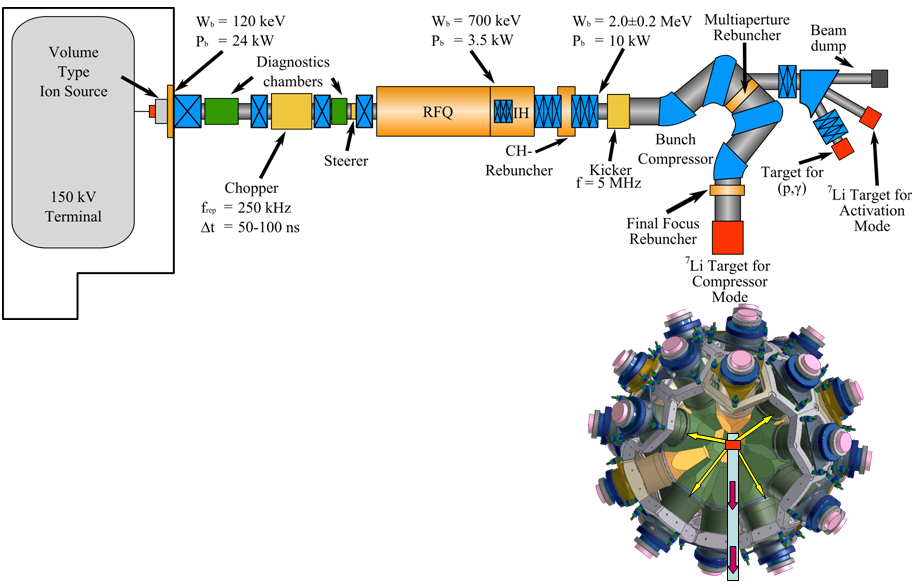FRANZ - Frankfurt Neutron Source
Neutrons in the astrophysically interesting keV-regime can be produced via the 7Li(p,n) reaction at the Goethe University Frankfurt. Currently a Van-de-Graaff accelerator is used to irradiate metallic lithium layers with energies up to 2.5 MeV and continues beam up to 20 μA. This results in neutron energies between 1 keV and 1 MeV. The neutron-energy spectrum depends on the energy of the impinging protons, the thickness of the lithium layer and the position of the sample. It can be estimated with the online tool PINO.
In the future we will use a RFQ-IH-based high-current accelerator to produce a very intense
neutron beam. The energy of primary proton beam will be adjustable between 1.8 and 2.2 MeV. In addition, proton-induced experiments are planned, where different samples will be directly irradiated with the high-intensity proton beam.

A volume type ion source will deliver a continuous proton beam of 200 mA at 120 keV.
The following accelerator stages will be operated in two distinct modes, the continuous beam mode delivering up to 50 mA
on the target and the compressor or time-of-flight mode. The low-energy beam transport section
consisting of four solenoids to transports the beam from the source and matches the acceptance of the RFQ. In the compressor mode,
a chopper system
between solenoid 2 and 3 will provide beam pulses with a length of about 100 ns with a repetition rate of 250 kHz . The
RFQ and the following IH drift tube linac will be coupled together to achieve an efficient beam acceleration.
Furthermore only one power amplifier will be needed to provide the RF power for both accelerator stages. The Mobley
type bunch compressor will merge 9 micro bunches formed in the accelerator module to one single bunch of 1 ns with an
estimated peak current of about 8.3 A. A rebuncher will provide the post acceleration at a final beam energy adjustable
between 1.8 and 2.2 MeV.
|